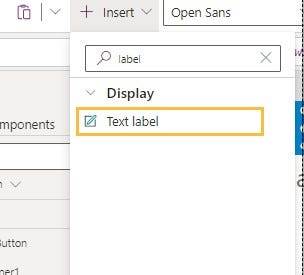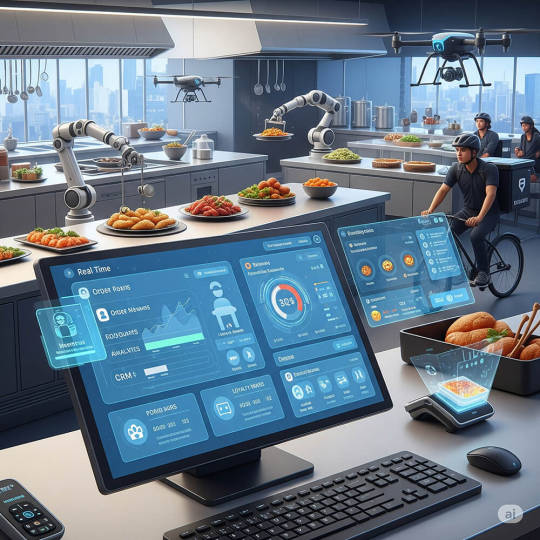#power platform development
Explore tagged Tumblr posts
Text
Enhancing Power Platform Development with Power CAT Tools
Discover how Microsoft’s Power CAT tools streamline Power Platform development. Learn about improved governance, accelerated app creation, efficient lifecycle management, and enhanced API testing to boost productivity and system reliability.

0 notes
Text
As businesses seek to improve efficiency in 2024, smart document automation is becoming a crucial tool for streamlining workflows and reducing manual effort. With the demand for faster, more accurate document management, organizations are turning to advanced automation solutions that integrate seamlessly with existing systems. In addition to saving organizations time, these trends are also lowering operating expenses and increasing overall productivity.One of the most significant trends is the increased use of Power Automate development services to create customized automation solutions. Companies are leveraging Power Automate to design custom workflows that eliminate the need for repetitive tasks like data entry, approval processes, and document routing. By automating these processes, businesses can improve accuracy, speed up document handling, and free up employees to focus on higher-value tasks. This trend is transforming how organizations manage everything from invoices to contracts, improving overall operational efficiency. Another emerging trend is the adoption of comprehensive automation that covers the entire document workflow from start to finish. This approach enables organizations to manage the whole document lifecycle from creation to storage with minimal human intervention. Document management systems are now using automation to capture, process, and store documents efficiently, ensuring that businesses can stay compliant and handle large volumes of paperwork with ease. With more companies adopting these systems, the ability to track and manage documents in real-time is becoming a game-changer. The demand for Power Automate consulting services is also on the rise. As businesses look to optimize their document automation strategies, expert consultants are helping them implement solutions that align with their specific needs. Whether it's improving an existing system or developing new automation workflows, consulting services provide businesses with the necessary expertise to make the most of Power Automate tools. By working with consultants, companies can avoid costly mistakes and ensure a smooth transition to automated workflows. These trends are proving that smart document automation is not just about increasing efficiency but also about improving accuracy and compliance. As more businesses adopt automation solutions, it's clear that embracing these innovations in 2024 will be key to staying competitive and enhancing long-term productivity.
#hire microsoft power automate consultants#microsoft flow consulting services#microsoft power automate consultants#microsoft power automate consulting#microsoft power automate services#power automate consulting provider#power automate consulting services#power automate development#power automate development services#power automate services#power automate solutions provider#power automate workflows#power platform development#workflow automation solutions
0 notes
Text
#GTA:MagicKingdomDisney






Game Development Overview:
Title: GTA: The Magic Kingdom Platform: PlayStation 7 Developer: Rockstar Games in collaboration with DearDearestBrands Genre: Open-world Action/Adventure
Storyline:
In GTA: The Magic Kingdom, players explore a dark, reimagined version of Disney's iconic Magic Kingdom. The world is divided into themed lands, each with its own rules and factions. At its core, the story follows a criminal protagonist who is embroiled in a high-stakes battle for power and survival within the kingdom's chaotic, secretive underworld.
The protagonist (you) is a mysterious figure drawn into the Magic Kingdom's politics, where a sinister force is using the enchantment of Disney’s original lands for darker purposes. The hunt for Bambi, who is rumored to possess extraordinary powers tied to the kingdom’s survival, becomes a central pursuit, while the player navigates treacherous alliances, heists, and confrontations.
Main Character:

Name: Maximus Dark (or choose your own name) Backstory: A former magic thief, Maximus was exiled from the underworld for crossing a powerful figure. Now, forced to work in the Magic Kingdom's black market, he must hunt down Bambi and unlock secrets from deep within the kingdom's enchanted areas. Maximus has a personal vendetta against the kingdom’s rulers, who wronged him in his past. Throughout the game, the player will uncover the protagonist’s lost memories and long-forgotten connection to the forest kingdom that Bambi hails from.
Motivation: Maximus's primary goal is to reclaim his lost power, discover the truth behind Bambi’s existence, and stop a powerful corporation that seeks to rewrite the very essence of the Magic Kingdom. As the story unfolds, Maximus will face moral dilemmas, where every choice shapes the fate of the kingdom and his own soul.
Supporting Characters:

Bambi - The elusive and powerful figure whose very presence is tied to the survival of the kingdom. Bambi is the key to restoring balance but is hunted by those who wish to harness their power for dark purposes. They are often seen as a mystical being, guiding the protagonist toward their true destiny.
Claire Jorif Valentine – An enigmatic leader of a rebel faction, Claire operates in the shadows, challenging the corrupt rulers of the kingdom. She provides Maximus with missions, allies, and sometimes betrays him to further her hidden agenda. A powerful figure in the underworld, she seems to know more about Bambi than she lets on.
The Enchanted Guardians – These figures protect each themed land within the Magic Kingdom. They could either be allies or enemies depending on how the player approaches them. The Guardians are immortal beings who represent the natural forces of the kingdom—ranging from corrupted versions of iconic Disney characters like Captain Hook, Maleficent, or the Queen of Hearts.
Tiger Lily – A key ally who once helped Bambi and holds secrets to unlocking the magical energies in the kingdom. She is on a quest to stop the dark forces from taking over the kingdom. As a supporting character, she aids in quests related to nature and magic and can unlock special abilities for the player.
Walt - A mysterious figure who seems to control the Magic Kingdom’s darkest secrets. He appears to have been a creator of both the magic and the corruption that now threatens the lands. Maximus will need to confront him as the story builds toward the final confrontation.
Gameplay:
Open-World Exploration: The game world is split into different magical lands, such as Adventureland, Fantasyland, Tomorrowland, and others. Each land offers unique challenges, missions, and enemies. Players can freely explore these areas and engage in side missions while unraveling the main story.
Combat: Players can engage in both ranged and hand-to-hand combat, using magical powers, enchanted weapons, and advanced technology. The combat system is dynamic, blending traditional open-world combat with the ability to wield magic and technology.
Heist Missions: As Maximus tries to gain control of the Magic Kingdom, he must undertake heists to infiltrate high-security areas and steal vital items—such as keys to unlock magical areas or magical artifacts that help in the hunt for Bambi.
Choices & Morality: The game emphasizes player choices, with the narrative changing based on decisions. Will Maximus become a hero, villain, or something in-between? The relationship with Bambi and other characters is crucial, as decisions affect both alliances and the kingdom’s fate.
Stealth and Deception: Players can also use stealth to infiltrate the kingdom’s high-security areas or employ deception to manipulate enemies. Using disguises, magic, and technology, Maximus can change the course of battles or avoid them altogether.
Motivation of Player:
The player is constantly driven by the need for power, knowledge, and redemption. They must build their empire, uncover the dark secrets of the kingdom, and forge relationships with various characters—each with their own agendas. However, the hunt for Bambi represents more than just a physical chase; it's a quest for deeper understanding, as Bambi’s powers could either save or doom the Magic Kingdom.
Key Objectives:
Locate Bambi: The primary objective is to find Bambi before the forces of darkness do. Along the way, players uncover the mysteries of the forest kingdom and its connection to the greater magical world.
Restore the Kingdom: Players must gather allies, defeat corrupt leaders, and unlock ancient powers to restore balance to the kingdom. Each land requires the completion of key quests, often involving battles, negotiations, and solving puzzles.
Uncover Maximus’s Past: As Maximus’s memories return, the player will unlock hidden abilities and unique storylines. The past is filled with betrayal and secrets that will help guide the future of the kingdom.
End the Corruption: Maximus must dismantle the oppressive corporation that seeks to control the kingdom's magical energy. This requires sabotaging their operations, stealing key documents, and confronting their leaders in epic battles.
The Final Confrontation: In the game's climax, the player must decide whether to join Bambi in their fight for freedom or betray them to seize ultimate power. The fate of the Magic Kingdom—and possibly the world—rests in the player’s hands.
This game blends classic open-world gameplay with dark fantasy elements and a rich narrative, providing players with the chance to explore a re-imagined Disney universe full of intrigue, magic, and moral complexity. The pursuit of Bambi adds layers of mystery and suspense, making this a truly unique entry in the GTA franchise.








To project the potential success of GTA: The Magic Kingdom in 2025, we need to consider various factors including market trends, audience engagement, and the unique elements of the game. Here's a breakdown:
Market Growth for Open-World and Action-Adventure Games:
Current Trends: The gaming industry, especially for open-world games and action-adventure genres, has shown steady growth. Titles like Grand Theft Auto V, The Witcher 3, and Cyberpunk 2077 continue to drive demand for expansive worlds with immersive stories.
Projections: The global gaming market is expected to grow at a compound annual growth rate (CAGR) of around 9.5% from 2024 to 2028. As GTA: The Magic Kingdom combines elements of beloved franchises (GTA and Disney), it could tap into both established fanbases, providing a unique mix of nostalgia and innovation.
Audience Engagement and Sentiment:
Nostalgia Factor: The reimagining of Disney’s Magic Kingdom with dark and mature themes will likely engage both nostalgic fans of Disney and mature audiences looking for an alternative take on Disney. This could boost both initial sales and long-term engagement.
Fanbase Growth: By 2025, your fanbase could grow significantly as the game's story unfolds. Assuming solid marketing campaigns and collaborations with influencers or streamers, you might see a steady increase in followers and engagement leading up to and after the game’s release.
Projections: Positive sentiment is expected if the game's unique blending of fantasy, technology, and dystopian elements resonates with audiences. Projections for engagement could range from a 15-20% increase in social media mentions in the first year after release.
Technological Advances and Game Development:
PlayStation 7 and Future Hardware: Given the expected launch of PlayStation 7 around 2025, GTA: The Magic Kingdom could be designed to take full advantage of next-gen console power. This will allow for an even more immersive experience with advanced graphics, smoother gameplay, and expansive worlds.
Projections: With the integration of next-gen technologies (such as AI-driven NPCs and advanced virtual reality options), GTA: The Magic Kingdom could have a 30-40% higher player retention rate due to these enhanced features.
Sales Projections:
Market Demand: Based on trends for similar games (open-world, fantasy, and action-adventure), initial sales could range between 5-10 million copies within the first year.
Projections for 2025: The game could potentially reach 15-20 million copies sold by 2025, depending on post-launch expansions, updates, and downloadable content (DLC). A strong, loyal fanbase built from the early adoption of the game could help push this figure higher.
Expansion and Future Growth:
DLCs & Expansions: By 2025, the game could see its first major expansion, adding new zones, characters, and stories to keep players engaged.
Projections: Expansions or sequels could drive continued engagement. This could result in an additional 10-20% increase in sales in the second year post-launch, especially if the game incorporates user feedback and evolves based on community input.
Marketing and Brand Partnerships:
Brand Alignment: With ties to Disney, GTA: The Magic Kingdom could attract partnerships, cross-promotions, and collaborations with major brands.
Projections: These collaborations could increase visibility, leading to higher-than-expected sales and engagement. With a proper marketing push and potentially viral content, the game's overall reach could expand significantly, especially if there are partnerships with influencers or Disney-themed events.
Summary of Projections for 2025:
Sales: 15-20 million copies sold globally
Player Engagement: 30-40% higher retention with the introduction of new technology
Audience Growth: Significant increase in fanbase with positive sentiment and engagement, likely 20-25% growth year-over-year
Brand Partnerships and DLCs: Increased revenue from post-launch content and collaborations
Overall, with the unique blend of popular genres and the anticipated growth of gaming markets, GTA: The Magic Kingdom could be positioned for strong performance by 2025, with significant growth in both sales and player engagement.
#Game Development Overview:#Title: GTA: The Magic Kingdom#Platform: PlayStation 7#Developer: Rockstar Games in collaboration with DearDearestBrands#Genre: Open-world Action/Adventure#---#Storyline:#In GTA: The Magic Kingdom#players explore a dark#reimagined version of Disney's iconic Magic Kingdom. The world is divided into themed lands#each with its own rules and factions. At its core#the story follows a criminal protagonist who is embroiled in a high-stakes battle for power and survival within the kingdom's chaotic#secretive underworld.#The protagonist (you) is a mysterious figure drawn into the Magic Kingdom's politics#where a sinister force is using the enchantment of Disney’s original lands for darker purposes. The hunt for Bambi#who is rumored to possess extraordinary powers tied to the kingdom’s survival#becomes a central pursuit#while the player navigates treacherous alliances#heists#and confrontations.#Main Character:#Name: Maximus Dark (or choose your own name)#Backstory: A former magic thief#Maximus was exiled from the underworld for crossing a powerful figure. Now#forced to work in the Magic Kingdom's black market#he must hunt down Bambi and unlock secrets from deep within the kingdom's enchanted areas. Maximus has a personal vendetta against the king#who wronged him in his past. Throughout the game#the player will uncover the protagonist’s lost memories and long-forgotten connection to the forest kingdom that Bambi hails from.#Motivation: Maximus's primary goal is to reclaim his lost power#discover the truth behind Bambi’s existence
10 notes
·
View notes
Text
Generative AI Solutions Architect
Job title: Generative AI Solutions Architect Company: EXL Service Job description: to be essential for the role: Programming & Libraries: Deep proficiency in Python and extensive experience with relevant AI/ML/NLP… experience in technology consulting or a client-facing technical specialist role within a technology provider is highly… Expected salary: Location: United Kingdom Job date: Wed, 28 May…
#Aerospace#Android#audio-dsp#Automotive#cloud-native#computer-vision#Crypto#data-engineering#dotnet#erp#ethical-hacking#full-stack#iot#it-consulting#it-support#low-code#metaverse#mlops#mobile-development#NLP Specialist#power-platform#prompt-engineering#robotics#scrum#site-reliability#SoC#telecoms#visa-sponsorship#vr-ar
2 notes
·
View notes
Text
I don't fucking WANT your stupid fucking AI "search with microsoft copilot" FUCK OFF "can our AI chatbot help you?" DIE "learn language with AI!" NO "code with copilot" YOU WILL NOT FUCKING TOUCH MY CODE YOU PIECE OF METALLIC SHIT. MY CODE IS ART THAT WILL NOT BE FUCKING DEFILED BY A SOULLESS CORPORATION PUPPET
#fuck generative ai#I opened github and the first message is “world's largest ai powered development platform”#code was meant to be CREATED#javascript bros have ruined it already#and ai bros are already actively ruining it#the whole vibe coding idiocy is going to be a goldmine for infosec tho#ik copilot has existed for a while but I am sick of ai being shoved down everywhere#the other day I was trying to find smth on pinterest and I swear to god 90% of shit there is ai shit now
3 notes
·
View notes
Text
Expert Power Platform Services | Navignite LLP

Looking to streamline your business processes with custom applications? With over 10 years of extensive experience, our agency specializes in delivering top-notch Power Apps services that transform the way you operate. We harness the full potential of the Microsoft Power Platform to create solutions that are tailored to your unique needs.
Our Services Include:
Custom Power Apps Development: Building bespoke applications to address your specific business challenges.
Workflow Automation with Power Automate: Enhancing efficiency through automated workflows and processes.
Integration with Microsoft Suite: Seamless connectivity with SharePoint, Dynamics 365, Power BI, and other Microsoft tools.
Third-Party Integrations: Expertise in integrating Xero, QuickBooks, MYOB, and other external systems.
Data Migration & Management: Secure and efficient data handling using tools like XRM Toolbox.
Maintenance & Support: Ongoing support to ensure your applications run smoothly and effectively.
Our decade-long experience includes working with technologies like Azure Functions, Custom Web Services, and SQL Server, ensuring that we deliver robust and scalable solutions.
Why Choose Us?
Proven Expertise: Over 10 years of experience in Microsoft Dynamics CRM and Power Platform.
Tailored Solutions: Customized services that align with your business goals.
Comprehensive Skill Set: Proficient in plugin development, workflow management, and client-side scripting.
Client-Centric Approach: Dedicated to improving your productivity and simplifying tasks.
Boost your productivity and drive innovation with our expert Power Apps solutions.
Contact us today to elevate your business to the next level!
#artificial intelligence#power platform#microsoft power apps#microsoft power platform#powerplatform#power platform developers#microsoft power platform developer#msft power platform#dynamics 365 platform
2 notes
·
View notes
Text
Simplify Transactions and Boost Efficiency with Our Cash Collection Application
Manual cash collection can lead to inefficiencies and increased risks for businesses. Our cash collection application provides a streamlined solution, tailored to support all business sizes in managing cash effortlessly. Key features include automated invoicing, multi-channel payment options, and comprehensive analytics, all of which simplify the payment process and enhance transparency. The application is designed with a focus on usability and security, ensuring that every transaction is traceable and error-free. With real-time insights and customizable settings, you can adapt the application to align with your business needs. Its robust reporting functions give you a bird’s eye view of financial performance, helping you make data-driven decisions. Move beyond traditional, error-prone cash handling methods and step into the future with a digital approach. With our cash collection application, optimize cash flow and enjoy better financial control at every level of your organization.
#seo agency#seo company#seo marketing#digital marketing#seo services#azure cloud services#amazon web services#ai powered application#android app development#augmented reality solutions#augmented reality in education#augmented reality (ar)#augmented reality agency#augmented reality development services#cash collection application#cloud security services#iot applications#iot#iotsolutions#iot development services#iot platform#digitaltransformation#innovation#techinnovation#iot app development services#large language model services#artificial intelligence#llm#generative ai#ai
4 notes
·
View notes
Text
Count The Rows In A Power Apps Gallery With AllItemsCount
Overview:
In this blog post, we’ll explore how to count Power Apps Gallery Rows using the AllItemsCount property. We’ll insert a label to show the count of all gallery items and then implement the exact code for precise counting. Each step comes with images and clear instructions. By the end, you’ll master the display of the total number of items in any gallery. Let’s dive in!


This code we use and count how many items in gallery
Read Full Post here: How to Count Rows in Power Apps Gallery: A Step-by-Step Guide (softwarezone365.com)
View Post On: LinkedIn: (4) Software Zone 365: Company Page Admin | LinkedIn Twitter: https://twitter.com/365_zone40741/status/1712883279580614768 Medium: Microsoft’s Power Platform Potential: Unlocking Business Impact (softwarezone365.com) Pinterest: https://www.pinterest.com/pin/1065875436793645010 Reddit: https://www.reddit.com/user/SoftwareZone365/comments/1773k2e/count_the_rows_in_a_power_apps_gallery_with/ Quora: https://www.quora.com/profile/Software-Zone-365/In-this-blog-post-we-ll-explore-how-to-count-Power-Apps-Gallery-Rows-using-the-AllItemsCount-property-We-ll-insert-a-l GitHub: Count The Rows In A Power Apps Gallery With AllItemsCount · softwarezone365/PowerApps Wiki (github.com) Instagram: https://www.instagram.com/p/CyWOuK8sGc9/ Facebook: https://m.facebook.com/story.php?story_fbid=300738072723966&id=100083633251137&mibextid=ZbWKwL
#development#AllItemsCount#App Development#BrowseGallery1#Coding in Power Apps#Gallery Items#Gallery Management#Gallery Rows#Item Counting#Label Count#Microsoft Power Apps#Power Apps#Power Apps Functions#Power Apps Gallery#Power Apps Tips#Power Apps Tutorial#Power platform#Row Counting Technique#Step-by-Step Guide#Text Property
2 notes
·
View notes
Text
Transforming Patient Care: Using Power BI for Healthcare Analytics.
Discover the game-changing role of Power BI in healthcare analytics. This blog showcases how Power BI revolutionizes patient care by transforming data into actionable insights. From optimizing resource allocation to enhancing patient outcomes and streamlining administrative processes, Power BI empowers healthcare professionals to make informed decisions swiftly and effectively. Through real-world examples and case studies, learn how organizations leverage Power BI to drive efficiency, improve patient satisfaction, and save lives. Whether it’s identifying trends in patient populations or forecasting demand for services, Power BI equips stakeholders with the tools they need to navigate the complexities of modern healthcare. Explore the transformative potential of Power BI in shaping the future of patient care delivery.
Healthcare systems are now facing a huge wave of data, presenting a unique opportunity to revolutionize patient care and management. Embracing advanced analytics is becoming essential for success in this data-rich environment. By shifting from simply collecting data to actively using it, healthcare is making great strides towards predicting health trends and making quick, informed decisions.
This need has driven the demand for powerful, adaptable tools that can process large datasets efficiently and offer immediate insights. Microsoft Power BI stands out as a vital technology in this space, providing a robust platform that harnesses the power of real-time analytics to enhance decision-making and significantly improve patient outcomes. With its intuitive dashboards and easy integration with existing systems, Power BI enables healthcare providers to tap into their data streams more effectively, unlocking new efficiencies and better strategies for patient care.
Why Healthcare Analytics Matters Today
Healthcare organizations face unprecedented pressures: constrained budgets, workforce shortages, and rising regulatory demands. Embedding analytics with Power BI in healthcare helps leaders reassign resources, control costs, and move beyond manual workflows. Predictive models support targeted interventions for at-risk patients, driving meaningful risk reduction in healthcare and guiding preventive population health analytics.
Unified dashboards foster stronger healthcare team collaboration. When clinicians, administrators, and finance staff access shared insights in Microsoft Teams or intranet portals, they align on priorities and act swiftly breaking down silos and keeping everyone focused on patient-centered care.
How Power BI Is Revolutionizing Healthcare
Microsoft Power BI is transforming the healthcare sector by enabling facilities to harness complex data and turn it into actionable insights. It supports healthcare analytics trends by providing robust tools for visualizing and analyzing data, thus empowering healthcare providers to make informed decisions swiftly. This capability is crucial not just for patient care but also for operational management and strategic planning. Through its integration with Microsoft Azure, Power BI enhances data accessibility, ensuring that health professionals can collaborate effectively and respond to patient needs with agility.
Real-Time Decision Making
Power BI’s integration into the healthcare sector has revolutionized how data informs clinical decision-making. By analyzing and acting upon real-time data in healthcare, Power BI enables medical professionals to access up-to-the-minute information that can critically affect outcomes. This immediate insight is essential not only for individual patient care but also for broader applications such as monitoring health trends and managing healthcare resources efficiently.
The real-time analytics capabilities of Power BI allow healthcare providers to detect and react to patient needs more rapidly and with greater precision. For instance, monitoring patient vitals and lab results in real time can help in identifying deteriorations in health quicker, thus significantly reducing response times in critical care situations. This rapid data processing plays a crucial role in risk reduction in healthcare, as it enables timely interventions that can be lifesaving.
Predictive Analytics for Better Outcomes
Power BI’s integration with Azure Machine Learning lets health systems forecast patient risk and resource demand. By running predictive models on historical EHR data and social determinants, providers can flag individuals at high risk of readmission or complications—and initiate early interventions that improve outcomes.
When combined with population health analytics, department-specific dashboards help care coordinators segment cohorts by condition or demographics, monitor outreach success, and adjust staffing or supply plans. Automated alerts keep clinical, financial, and operational teams in sync, driving stronger healthcare team collaboration and enabling CIOs and CTOs to make data-driven decisions—whether it’s planning ICU capacity for flu season or preventing medication shortages.
Key Benefits of Power BI in Healthcare Analytics
Power BI delivers a unified analytics foundation that streamlines clinical, operational, and patient-experience processes. By standardizing data access and embedding insights directly into care workflows, it frees teams to focus on high-value activities. The following benefits illustrate how Power BI enhances efficiency, collaboration, and patient satisfaction across healthcare settings.
Streamlining Clinical Workflows
By integrating FHIR connectors, Power BI centralizes referrals, appointments, and billing into a unified interface—eliminating manual handoffs and repetitive tasks. For example, during a cardiac emergency, doctors, nurses, and supporting staff can access patient history, real-time heart monitoring, and lab results simultaneously, enabling a coordinated and swift response that improves outcomes.
Enhancing Operational Efficiency
Live dashboards surface staffing levels, operating-room availability, and bed occupancy in one view. Managers can instantly reassign shifts or repurpose resources to meet changing demands, reducing manual coordination and ensuring care continuity.
Improving Patient Satisfaction
Shared dashboards visualize feedback, wait-time trends, and referral turnaround, so clinical and administrative teams can identify service gaps and act together. This collaborative approach accelerates targeted improvements and elevates the overall patient experience.
Advanced Features of Power BI in Healthcare
Power BI in healthcare offers a suite of advanced capabilities that move beyond descriptive dashboards to deliver predictive and tailored insights. By embedding AI and machine learning directly into reports and enabling department-specific views, organizations can anticipate clinical risks and strengthen healthcare team collaboration.
AI and Machine Learning for Forecasting
With built-in AI visuals and seamless Azure ML integration, Power BI in healthcare enables teams to deploy forecasting templates for sepsis detection, equipment maintenance, and discharge-risk models—transforming statistical outputs into intuitive charts. In early trials, sepsis-prediction models surfaced critical care at least 12 hours before traditional indicators, cutting mortality risks through timely interventions.
Custom Dashboards for Every Department
Power BI’s flexible data model supports department-specific dashboards, giving each team a tailored view of relevant KPIs without sacrificing enterprise-wide consistency. Clinical departments can monitor key quality metrics—length of stay, procedure turnaround, lab turnaround times—in a single pane, while finance teams can overlay cost and revenue analytics against service volumes. Supply-chain leaders benefit from real-time visibility into inventory levels of pharmaceuticals and consumables, integrating with IoT-enabled trackers via FHIR APIs in the Microsoft cloud for healthcare.
These custom dashboards are shareable and collaborative: Power BI’s row-level security ensures that sensitive patient data remains protected, yet allows cross-departmental users to comment, annotate, and co-author reports. By embedding these visualizations into existing intranet portals or Teams channels, CIOs drive a culture of continuous insight sharing—an embodiment of leading healthcare analytics trends that emphasize data democratization and healthcare team collaboration.
Ensuring Data Privacy and Compliance
As healthcare analytics trends advance, safeguarding patient data is non-negotiable. Power BI in healthcare runs on the Microsoft cloud for healthcare, inheriting HIPAA, HITECH, ISO 27001, and ISO 27018 certifications—and supports Business Associate Agreements to meet legal requirements. Data is encrypted at rest with customer-managed keys and in transit via TLS 1.2+. Row-level and object-level security enforce fine-grained access, and detailed audit logs capture every view, export, and share—driving risk reduction in healthcare and ensuring full compliance.
Secure, Collaborative Analytics for Care Teams
Power BI balances airtight security with seamless healthcare team collaboration. Reports can be embedded in Microsoft Teams channels or intranet portals using Azure AD single sign-on and multi-factor authentication, while private endpoints, Virtual Network integration, and ExpressRoute peering keep analytics traffic inside your network perimeter. Role-based controls ensure each user—whether clinician, IT director, or financial manager—sees only the data they’re authorized for, so cross-functional teams can discuss insights and act together without compromising patient privacy.
Getting Started with Power BI Healthcare Analytics
Having shown how real-time dashboards, predictive analytics, and centralized collaboration drive better patient care and risk reduction in healthcare, the steps below outline how to align your data infrastructure, governance, and teams for a successful Power BI in healthcare implementation.
Steps for Implementation
1. Assess Current Infrastructure: Inventory EHRs, imaging systems, and data warehouses to map integration points—and identify quick wins for population health analytics pilots.
2. Define Governance and Security: Establish data-governance policies, compliance controls, and a BI Center of Excellence to enforce risk reduction in healthcare and best practices.
3. Architect a Scalable Data Model: Use Azure Synapse or SQL Pool as the semantic layer. Ingest FHIR data with Power Query connectors and shape it into fact and dimension tables for efficient reporting.
4. Iterative Dashboard Development: Build MVPs for high-impact use cases—emergency department throughput or readmission risk—gather stakeholder feedback and refine visuals and metrics.
5. Pilot and Phased Rollout: Validate ROI in one department (e.g., cardiology) before scaling across the enterprise. Use pilot results to secure executive buy-in and budget for wider deployment.
6. Monitor, Govern, and Optimize: Leverage Power BI audit logs and capacity metrics to track usage, spot performance issues, and drive continuous optimization through your BI Center of Excellence.
Training Healthcare Teams on Power BI
Effective adoption of Power BI in healthcare hinges on equipping each role with the right skills and ongoing support. Targeted training ensures that analysts, clinicians, and IT teams can confidently leverage analytics within their daily workflows. The following structured programs lay out how to build and sustain expertise across your organization.
Role-Based Learning Paths:
Data Analysts: Deep dives into DAX formulas, data modeling techniques, and AI-powered visuals. This empowers analysts to build robust, department-level reports and advanced forecasting models—so your team can uncover trends and predict resource needs with precision.
Clinicians: Guided tutorials on navigating dashboards, setting up threshold alerts, and adding context through annotations. By giving care providers hands-on experience, they’ll quickly integrate insights into patient rounds and care plans, speeding up decisions at the bedside.
IT & Compliance: Workshops on workspace governance, security configurations, and tenant-wide administration. IT leaders learn to automate user provisioning, enforce row-level security, and monitor audit logs—ensuring a secure, compliant analytics environment that scales with your organization.
Hands-On Workshops:
Cross-functional teams collaborate on building a fully functioning healthcare dashboard using anonymized patient-visit data. Through step-by-step lab exercises—covering metrics like length-of-stay, throughput, and satisfaction—participants solve real use cases and leave confident in applying Power BI in healthcare to everyday workflows.
Microsoft Learn and Certifications:
Encourage self-paced modules on Power BI, Azure ML, and compliance connectors. Promote the Microsoft Certified: Data Analyst Associate (PL-300) certification to validate proficiency and drive adoption Microsoft Learn.
Analytics Clinics:
Regular forums hosted by the BI Center of Excellence for sharing dashboard innovations, troubleshooting, and reviewing healthcare analytics trends—fostering sustained healthcare team collaboration.
Conclusion: Shaping the Future of Healthcare with Power BI
Incorporating Power BI in healthcare is no longer a luxury—it’s a necessity for organizations striving to deliver safer, more efficient, and patient-centric care. By harnessing healthcare analytics trends, leveraging population health analytics, and embedding predictive models, technology leaders can unlock new levels of insight, drive measurable improvements, and reduce clinical and operational risks.
At VBeyond Digital, we bring clarity and velocity to your analytics journey. From data-architecture design and secure FHIR integrations to custom training and governance, our consultative approach ensures rapid time-to-value and sustained adoption. Together, we’ll turn your data into your greatest strategic asset—and shape a healthier tomorrow.
Ready to get started? Contact our team today to schedule a discovery workshop and pilot your first Power BI healthcare dashboard.
#power bi integration#power bi consulting#power bi consulting services#power bi experts#power bi consultant#power bi services#power bi consultants#power bi integrations#power platform developers
0 notes
Text
The Future of Food Delivery Apps: Why POS & CRM Integration Is the Ultimate Growth Catalyst in 2025

The aroma of opportunity is stronger than ever in the U.S. food delivery sector as we cruise through 2025, yet so is the intensity of competition. What began as a simple grab-and-go convenience has rapidly evolved into a sophisticated, consumer-driven experience. For any forward-thinking food delivery app development company, merely connecting diners with local eateries is no longer a path to sustainable success. The strategic bedrock for navigating this dynamic landscape and truly catalyzing app development for food business growth lies in one powerful synergy: the seamless integration of Point-of-Sale (POS) and Customer Relationship Management (CRM) systems.
This isn't just about a new tech trend; it's a fundamental shift in how restaurants and delivery platforms operate, interact with customers, and ultimately thrive. In a market where options abound, the true differentiator isn't just what you deliver, but how intelligently you understand, serve, and retain your patrons. This deep dive will explore why POS + CRM integration is poised to be the ultimate growth catalyst for on demand food delivery app development and why embracing it is non-negotiable for any business aiming to lead in this competitive space.
The 2025 Landscape: Beyond the Basic Order
The American consumer in 2025 is digitally fluent and exceptionally discerning. They expect more than just a convenient transaction; they demand a personalized, transparent, and effortlessly smooth experience from start to finish. This translates into key expectations for food delivery:
Hyper-Personalization: Generic offers are ignored. "Welcome back, Sarah!" alongside tailored recommendations is the new standard.
Real-Time Transparency: Customers want to know precisely when their meal will arrive, with granular tracking from kitchen to doorstep.
Seamless Problem Resolution: If an issue arises, they expect swift, empathetic support with minimal hassle.
Value-Driven Loyalty: Loyalty programs should genuinely reward their consistent patronage with perks that feel personal and valuable.
For restaurants and the platforms that facilitate their deliveries, meeting these rising expectations while maintaining profitability is a constant balancing act. Relying on fragmented systems—a POS for in-house orders, a separate tablet for online delivery platforms, and disconnected customer databases—creates significant data silos. These silos lead to operational inefficiencies, costly errors, and, most critically, a disjointed customer experience. This highlights the urgent need for comprehensive food delivery app development services that prioritize true integration.
Deconstructing the Catalyst: What POS & CRM Bring to the Table
Before we delve into the transformative power of their integration, let's briefly revisit the core functions of these two essential systems:
The POS (Point of Sale): Your Operational Command Center. Far beyond a simple cash register, a modern POS is the central nervous system of a restaurant. It manages sales transactions, processes orders (whether dine-in, takeout, or delivery), tracks inventory, handles menu updates, adjusts pricing, and often integrates directly with kitchen display systems (KDS) to streamline food preparation. It’s about ensuring smooth, accurate fulfillment.
The CRM (Customer Relationship Management): Your Customer Intelligence Hub. This system is singularly focused on understanding, engaging, and nurturing customer relationships. It collects vital customer data, tracks interactions across all touchpoints, logs preferences, manages feedback, and facilitates personalized communication campaigns. It's designed to build loyalty and drive repeat business.
Individually, these are powerful tools. But the real magic, the true "catalyst for growth" for any food delivery app development company, emerges when these two systems become one cohesive, intelligent entity. This integration means that every sale, every customer interaction, every menu item, and every piece of feedback flows into a single, centralized database. This unified "single source of truth" empowers intelligent decision-making and fosters unparalleled personalization.
The Unstoppable Synergy: How Integration Drives Growth
The benefits of integrating POS and CRM permeate every layer of the food delivery ecosystem, from back-of-house operations to the customer’s doorstep, profoundly impacting every food delivery application development strategy.
A. Operational Mastery: The Engine of Efficiency and Accuracy
The immediate and tangible impact of POS + CRM integration is felt in streamlined operations and significantly reduced friction.
Real-time Order Synchronization: Imagine a customer in San Francisco placing an order via your on demand food delivery app development solution. With deep integration, that order doesn't just appear on a separate tablet. It's instantly routed to the restaurant's integrated POS system, flowing directly to the Kitchen Display System (KDS). This eliminates manual data entry errors, drastically accelerates food preparation, and ensures order accuracy, leading to faster delivery times and a superior customer experience.
Dynamic Inventory & Menu Management: Is that popular seasonal dish out of stock? Did a new special just launch? An integrated system ensures that any change made in the POS (e.g., an item going out of stock, a price adjustment, or a new promotional combo) is immediately reflected across all platforms, including your food delivery application development. This proactive management prevents frustrating order cancellations due to unavailability, minimizes food waste, and optimizes ingredient purchasing, which is critical for custom food delivery software solutions aimed at boosting profitability.
Optimized Logistics & Dispatch: By combining real-time order data from the POS with customer location and historical delivery data from the CRM, integrated systems can dynamically optimize delivery routes, efficiently assign drivers, and provide precise estimated delivery times. For businesses operating their own delivery fleet, this translates into significant savings on fuel and labor costs, enhancing the overall efficiency of their food delivery app development services.
Unified Reporting & Analytics: No more piecing together disparate spreadsheets. All sales data—whether from dine-in, takeout, or app delivery—is consolidated into a single, comprehensive dashboard. This provides a holistic view of business performance, allowing for granular analysis of peak hours, top-selling items across channels, average order values, and revenue breakdowns. Such insights are invaluable for strategic menu engineering, optimized staffing, and identifying new avenues for growth.
B. Hyper-Personalization: The Heart of Customer Loyalty
This is where the CRM truly leverages the POS data to craft compelling, personalized customer experiences—the cornerstone of modern food delivery app development.
The 360-Degree Customer Profile: Every interaction, every order, every preference, every complaint—it’s all in one centralized profile. This comprehensive view allows your app to truly "know" the customer. Did Sarah prefer vegan options last week? Does she always add extra hot sauce? Has she ever had an issue with a delivery? This rich data pool informs every future interaction.
Intelligent Recommendations & Offers: Generic promotions are a thing of the past. With integrated data, your app can offer AI-driven recommendations ("Customers who ordered this also enjoyed X"), personalized discounts on their favorite items, birthday treats, or even remind them of past orders. Imagine a message like, "Welcome back, Sarah! Your usual order is ready for a quick re-order, plus check out our new dessert pairing!" This level of tailored engagement dramatically boosts conversion rates and cultivates genuine loyalty.
Seamless Loyalty Programs: Managing loyalty points, tiers, and rewards becomes effortless. Points accrue automatically with each purchase (thanks to POS data), and customers can view and redeem rewards seamlessly through the app (powered by CRM functionality). This fosters a sense of value and belonging, turning one-time buyers into loyal patrons and enhancing customer lifetime value.
Proactive Customer Service: When a customer needs support, the service agent has immediate access to their entire profile: past orders, preferences, and any previous issues. This empowers rapid, informed, and empathetic problem-solving, turning potential frustrations into opportunities for building stronger relationships. A proactive system can even identify potential delays based on kitchen queues and notify the customer before they even call, vastly improving satisfaction.
Precision-Targeted Marketing Campaigns: With rich customer segmentation powered by integrated data, marketing teams can craft highly effective, personalized campaigns. Instead of broad-stroke advertising, imagine sending a push notification about a new gluten-free option only to customers who frequently filter for dietary restrictions, or a weekend discount to those who typically order on Sundays. This precision maximizes ROI on marketing spend, a critical factor for food delivery app development companies vying for market share.
C. Scalability and Innovation: Building for Tomorrow
The integrated foundation is not just about current efficiency; it's about future-proofing your food delivery app development efforts.
Agility in Feature Deployment: A unified data structure simplifies the development and deployment of new features. Want to introduce a subscription meal plan? Or perhaps a new virtual brand operated out of a ghost kitchen? The integrated system ensures that new services seamlessly tie into existing operations and customer data, allowing for rapid innovation and responsiveness to market trends.
Multi-Location Management: For restaurant chains or platforms expanding their footprint across different cities, consistent data across multiple locations is vital. An integrated POS + CRM ensures uniform menu management, pricing, promotions, and customer service standards across all outlets, simplifying scaling efforts and maintaining brand consistency.
AI/ML Readiness: The clean, comprehensive dataset generated by integrated POS and CRM systems is the perfect fuel for advanced Artificial Intelligence (AI) and Machine Learning (ML) algorithms. This enables truly predictive analytics for demand forecasting, dynamic pricing based on real-time factors like weather or local events, sophisticated customer lifetime value (CLV) modeling, and even voice-activated ordering systems, pushing the boundaries of food delivery application development.
The Road Ahead: Navigating the Integration Journey
While the benefits are transformative, implementing an integrated POS and CRM system requires strategic planning and investment.
Initial Investment: The upfront cost of developing, integrating, or migrating to robust systems can be substantial. However, it's crucial to view this as a strategic investment that yields significant long-term ROI through increased efficiency, reduced errors, and enhanced customer loyalty.
Data Migration & Compatibility: Transitioning existing data from disparate legacy systems can be complex. Choosing vendors with strong API capabilities and potentially engaging expert food delivery app development services for data migration is paramount to ensure data integrity and a seamless transition.
Security & Data Privacy: Handling vast amounts of sensitive customer data demands robust cybersecurity measures and strict adherence to data protection regulations. In the U.S., various state-level laws (like the CCPA in California) and federal regulations emphasize the critical importance of secure data handling and privacy by design in custom food delivery software solutions. Trust is fundamental to customer relationships.
Vendor Selection & Training: Choosing the right POS and CRM vendors that offer proven integration capabilities and comprehensive support is vital. Equally important is thorough training for all staff—across operations, marketing, and customer service—to ensure maximum utilization of the new integrated system.
Conclusion: The Integrated Future is Now
In 2025, the U.S. food delivery industry is a marathon, not a sprint. Success hinges not just on speed, but on intelligence, resilience, and a profound understanding of the customer. The strategic integration of POS and CRM systems is the ultimate growth catalyst because it unlocks unprecedented operational efficiency, fuels hyper-personalized customer experiences, and builds a scalable foundation for future innovation.
For any food delivery app development company or restaurant serious about cementing its place in the market, embracing this integrated approach is no longer an option—it's the strategic imperative. It's about moving beyond simply delivering food to delivering an integrated, intelligent, and deeply personal culinary journey that keeps customers coming back for more. The future of food delivery application development is here, and it’s seamlessly connected.
#On-demand food delivery solutions#Restaurant tech trends 2025#Integrated restaurant systems#CRM for food delivery apps#POS system for online food ordering#Food delivery app personalization#Customer engagement in food apps#How to scale a food delivery app#AI-powered food delivery platforms#Digital transformation in food industry#Food delivery app development USA#Restaurant POS CRM integration USA#Mobile app development for food startups#Custom food delivery solutions
0 notes
Text
Accelerate Your Digital Strategy with Power Platform Development Services
Boost your digital transformation with Power Platform Development Services. Harness the power of Power Apps, Power BI, Power Automate, and Power Virtual Agents to drive automation, enhance insights, and optimize business efficiency.
0 notes
Text
In the energy sector, maintenance costs and downtime can significantly affect output and profitability.. a tool developed by Microsoft is increasingly being used to address these challenges by automating routine tasks and optimizing workflows, resulting in reduced operational disruptions and lower maintenance costs. One of the primary ways Power Automate benefits the energy industry is by minimizing downtime. Energy companies rely on a range of complex systems and equipment that require constant monitoring. With Power Automate, companies can create automated workflows that monitor these systems in real time, sending alerts when anomalies are detected, or issues are imminent. This proactive approach allows companies to address problems before they lead to system failures, preventing costly downtime and service interruptions. Additionally, Power Automate enhances maintenance efficiency by automating the scheduling and execution of routine tasks. Regular maintenance is crucial for ensuring that equipment operates at peak performance, but traditional manual scheduling and task management can be inefficient and error-prone. With Power Automate, maintenance tasks are automatically scheduled based on predefined parameters such as equipment usage, age, or manufacturer recommendations. This ensures that preventative maintenance is completed on time, reducing the likelihood of unexpected breakdowns and extending the lifespan of equipment. Another significant benefit of Power Automate is its ability to streamline data management and improve decision-making. The platform can gather and process vast amounts of data from different systems, providing energy companies with actionable insights. These insights enable better forecasting and maintenance planning, allowing businesses to allocate resources more effectively and avoid unnecessary costs. By reducing unplanned downtime and optimizing maintenance schedules, Power Automate helps energy companies decrease maintenance costs and improve operational efficiency. It also frees up valuable time for employees, allowing them to focus on higher-level tasks rather than manual, time-consuming processes. In conclusion, Power Automate is a game-changer for the energy sector, providing an effective solution to minimize downtime, lower maintenance costs, and improve overall operational efficiency. As the energy industry continues to evolve, adopting automation tools like Power Automate will be crucial for staying competitive and maximizing profitability.
#hire microsoft power automate consultants#microsoft flow consulting services#microsoft power automate consultants#microsoft power automate consulting#microsoft power automate services#power automate consulting provider#power automate consulting services#power automate development#power automate development services#power automate services#power automate solutions provider#power automate workflows#power platform development#workflow automation solutions
1 note
·
View note
Text
Learn how technology is revolutionizing candidate screening services with AI. This in-depth blog from Salarite highlights top trends and tools shaping the future of recruitment. Whether you're an employer or job seeker, discover how automated screening can improve hiring accuracy while saving time and resources.
#salarite#startup jobs in jaipur#candidate sourcing platforms#candidate sourcing tools#candidate screening#web developer jobs in jaipur#power bi jobs in jaipur
0 notes
Text
IT Service Desk Analyst
Job title: IT Service Desk Analyst Company: SIG Job description: and exteriors products. We are looking for a technically skilled and customer-oriented IT Service Desk Analyst to provide first… such as ServiceNow Security & Compliance: Awareness of cybersecurity best practices Understanding of data protection and access… Expected salary: Location: Sheffield Job date: Sat, 19 Jul 2025 02:59:41…
#agritech#Android#artificial intelligence#Azure#Backend#cloud-computing#Crypto#CTO#cybersecurity analyst#data-engineering#data-privacy#data-science#digital-twin#dotnet#ethical-hacking#HPC#iOS#iot#Java#Machine learning#marine-tech#metaverse#mobile-development#Networking#power-platform#prompt-engineering#Python#telecoms#vr-ar
0 notes
Text
How to Export Clean Code & Avoid Vendor Lock-In with FAB Builder

Have you ever built an application on a platform only to realize later that you’re stuck with it? This is a common problem in the modern development ecosystem, especially with the growing popularity of no code platforms. While these platforms promise speed, flexibility, and scalability, many developers and businesses find themselves trapped in what’s called vendor lock-in. But does it have to be this way?
What if there was a way to combine the speed of a no code platform with the freedom of custom code? What if you could develop applications quickly and still walk away with clean, exportable code you truly own? This is where FAB Builder enters the conversation, changing the way we think about code generation and app development.
Why is Clean Code Export Important?
Let’s start with the basics. What does it mean to export clean code?
In the world of application development platforms, clean code refers to code that is easy to read, maintain, modify, and reuse. Clean code is well-structured, follows standard conventions, and avoids unnecessary complexity. Exportable clean code means that what you create inside a platform can be taken out and run, modified, or extended independently.
This feature is not just a convenience—it’s a necessity.
When your business depends on a web or mobile app, being tied to a specific platform to maintain or scale it can become a serious roadblock. You might face challenges like:
Paying recurring licensing fees
Waiting for vendor-specific updates
Inability to integrate with other tools
Trouble onboarding developers who aren’t familiar with the proprietary environment
Risk of losing your application if the platform goes offline or changes its policy
Would you buy a car if you could only drive it on one specific road? Probably not. That’s what vendor lock-in feels like in the tech world.
What Is Vendor Lock-In in No Code Platforms?
Vendor lock-in happens when the platform you use to build your application restricts your ability to move your app or data elsewhere. Many no code platforms offer great tools, intuitive design, and fast deployment, but the trade-off is that the app lives entirely within their ecosystem.
You may have limited access to the underlying code, meaning you can’t export or run your app without the platform. Even if code export is offered, it’s often poorly structured, bloated, or filled with proprietary dependencies that make it nearly impossible to edit or manage outside the original environment.
Is this really the freedom that no code promised?
Can You Really Have the Best of Both Worlds?
Here comes the big question: Can you combine the ease of no code platforms with full control over your application? The answer lies in the evolution of modern code generation technology.
Traditional code generators have been around for a while, but many still fall into the same trap—producing unreadable or unscalable code. But with advancements in AI code generators and smart code builders, the approach is shifting.
FAB Builder, for instance, has been designed to rethink how we build, export, and scale applications.
How FAB Builder Approaches Code Generation Differently
When examining FAB Builder, a few things become clear. The platform positions itself as an intuitive application development platform that puts control back into the developer’s hands.
So how does FAB Builder help you avoid vendor lock-in?
1. Exportable, Developer-Ready Code
One of the standout features is its ability to generate exportable code that adheres to standard frameworks. Instead of trapping you in a closed ecosystem, FAB Builder acts more like an intelligent code generator—allowing you to develop visually and then export real, clean code.
You can take this code, modify it in your preferred IDE, integrate it with third-party systems, or even host it independently. This breaks the cycle of dependency and allows full autonomy over the product.
Wouldn't you rather build with confidence, knowing your code is yours to keep?
2. Clean Code Structure for Scalability
The code generated by FAB Builder isn’t just exportable—it’s also clean and modular. That means any developer with experience in standard technologies can pick it up, understand it, and work with it. Clean, readable code is crucial when scaling your application, onboarding new team members, or debugging.
If you’ve ever tried to untangle poorly generated code, you know how much time and energy that consumes. So why not use a code builder that keeps code hygiene in mind from the beginning?
3. AI-Powered Code Generation with Developer Logic
Another key differentiator is FAB Builder’s use of AI—not just for smart suggestions or faster development, but for real-time AI code generation that respects logic, flow, and modern best practices.
Instead of spitting out blocks of generic code, the system understands the user’s intent, making it possible to generate clean, optimized code that mirrors how a developer would write it.
Isn’t it time that AI-assisted coding stopped being a gimmick and started being practical?
Why Should Businesses Care About Vendor Lock-In?
From a business perspective, being tied to a single platform can have long-term consequences. Initially, it may seem cost-effective or timesaving, but as your application evolves, the limitations begin to surface.
You might need to:
Integrate with legacy systems
Implement custom features not supported by the platform
Shift to on-premises hosting due to compliance requirements
Transition to a new tech stack based on market demands
If you’re locked in, each of these moves becomes difficult, expensive, or impossible.
Choosing a platform that gives you control from day one can help future-proof your product.
Is No Code the Right Approach if You Want Full Control?
This is where the conversation gets interesting. Traditional views often pit no code against full-stack development—as if one is fast but limited, while the other is powerful but slow. But with platforms like FAB Builder, this binary thinking is being challenged.
No code doesn’t have to mean no control.
By providing a hybrid approach—visual development backed by exportable, structured code—FAB Builder offers a middle path. It empowers non-developers to prototype and build, while also enabling developers to refine, scale, and own the final product.
Can a no code platform be both easy and professional? The answer seems to be yes—if it’s built with flexibility and ownership in mind.
How to Avoid Vendor Lock-In: Practical Steps
Avoiding vendor lock-in requires a conscious approach. Here are key considerations when evaluating a platform:
Does the Platform Offer Code Export?
This should be the first box to check. Look for platforms that don’t just offer code export, but ensure that the code is well-structured and free from proprietary dependencies.
What Technology Stack Does It Use?
Make sure the generated code is based on widely accepted frameworks and languages. This will make it easier to maintain and scale with standard developer resources.
Can Developers Take Over Easily?
Even if the app was built using no code tools, the code should be intuitive enough for professional developers to work with. You shouldn’t need to “rebuild” everything just to add new features.
Is the Platform Transparent?
Transparency about how the code is structured, what technologies are used, and how the backend operates is critical. Avoid platforms that operate like black boxes.
Does It Support Long-Term Flexibility?
Think about your product’s future. Will you need to integrate with other services? Host on different servers? Add new user roles or workflows? Choose a platform that supports this kind of evolution.
Is FAB Builder the Future of Code Ownership?
While there are many tools in the no code space, few manage to offer the same degree of balance between visual simplicity and backend control as FAB Builder. Its emphasis on clean code generation, developer-ready exports, and AI-assisted logic makes it a powerful tool for those who want to build quickly but scale intelligently.
More than just a development platform, it acts as a code builder that doesn’t compromise code ownership—a crucial need in today’s fast-paced, ever-changing tech environment.
In a world where technology changes overnight, wouldn’t you rather build a foundation you control?
Final Thoughts: What Kind of Builder Do You Want to Be?
Choosing a no code platform isn’t just about faster development—it’s about long-term control. With most platforms, speed often comes at the cost of ownership. But tools like FAB Builder challenge that norm by offering both visual simplicity and full access to clean, exportable code.
In a rapidly changing tech world, being able to own, edit, and scale your application without limitations is a major advantage. Whether you're building a startup MVP or a scalable enterprise solution, having the freedom to grow on your own terms is essential.
So ask yourself—do you want to be a builder who’s locked into a system, or one who fully owns and shapes their product from start to finish? With the right platform, you don’t have to choose between ease and control—you can have both.
FAQs
Q1. What is vendor lock-in in no code platforms? Vendor lock-in refers to the limitations users face when they cannot move their app, data, or code outside a platform, often due to lack of exportable or editable code.
Q2. Can no code platforms like FAB Builder export clean code? Yes, FAB Builder allows developers to export clean, modular code that can be independently hosted, modified, and extended without relying on the platform.
Q3. Why is clean code important for application development? Clean code ensures scalability, easier debugging, better collaboration among developers, and long-term sustainability of your application.
Q4. How does FAB Builder use AI in code generation? FAB Builder uses AI to understand the user's intent and generate developer-grade, optimized code structures, improving both speed and accuracy.
Q5. What are the benefits of using a hybrid no code platform? A hybrid no code platform like FAB Builder allows fast visual development along with full code export, offering the best of both worlds—speed and control.
#app development#low code platforms#code generation#ai code generation#app developers#fab builder#application developer#mobile app development#ai powered solutions
0 notes
Text
Seamless Intelligence in Your Palm: The Future of IoT Control

The next evolution in IoT app development, where AI integration, Bluetooth mesh networking, and edge computing combine to enable seamless control of smart systems. From real-time data to over-the-air updates, the mobile interface brings intelligent automation to your fingertips — built for scale, security, and sustainability.
#IoT App Development#Bluetooth Mesh Networking#Edge Computing#AI-Driven Automation#Smart City Solutions#IoT Mobile Control#Real-Time IoT Monitoring#Secure IoT Communication#OTA Firmware Updates#Low Power IoT Devices#Scalable IoT Platforms#Intelligent Device Management#IoT
0 notes